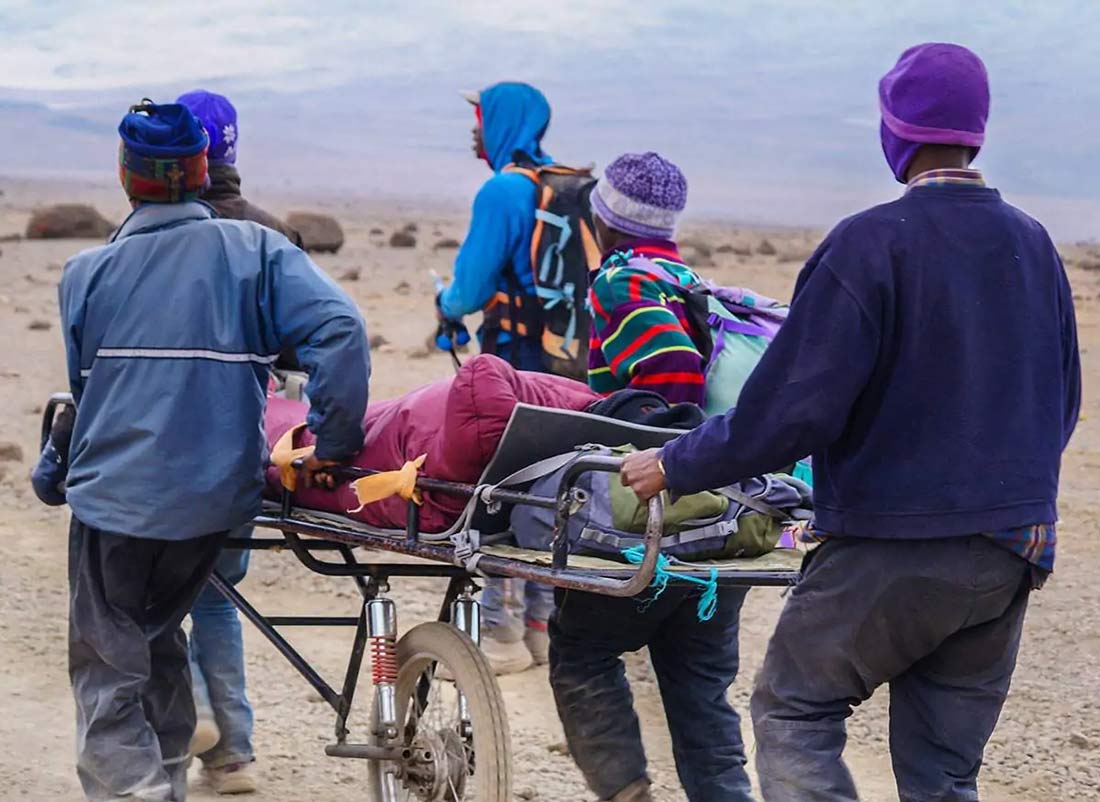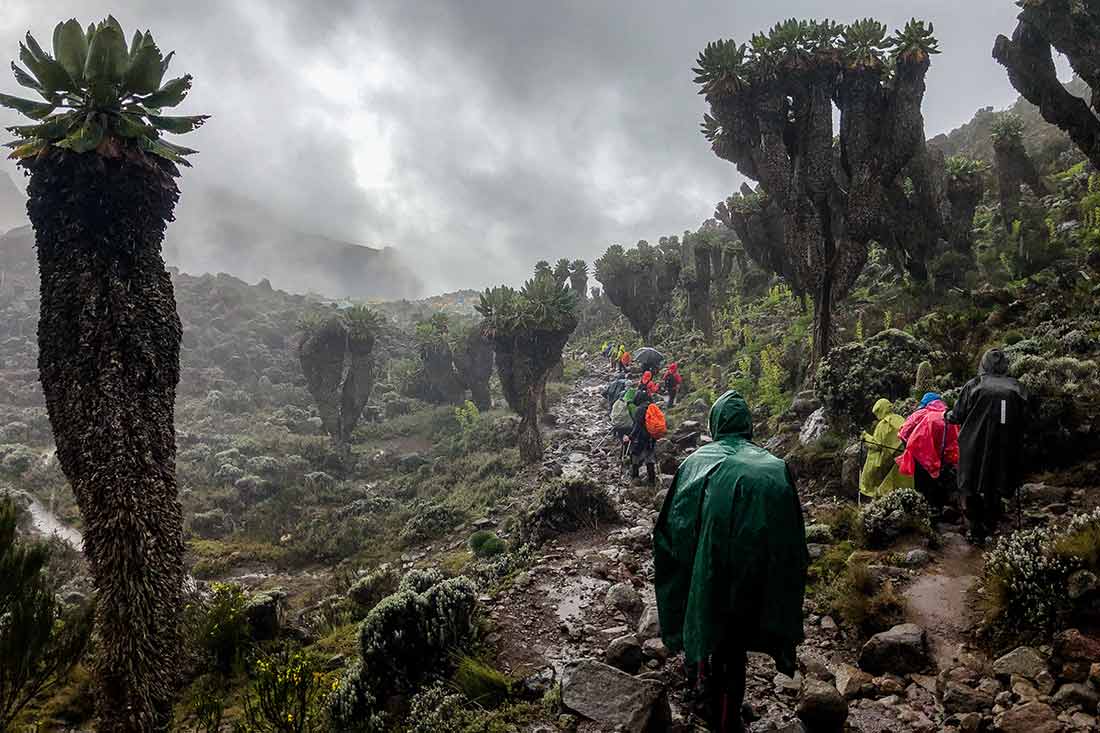You are thinking about climbing Kilimanjaro, but you are afraid of failure. First of all, what are the reasons for failing to reach the summit? Secondly, how can you not be one of those people?
Reasons for Failure
It’s difficult to estimate the exact number of how many people fail climbing Kilimanjaro each year. Success rates can vary greatly depending on a range of factors, including weather conditions, altitude sickness, physical fitness, and the quality of the tour operator and support team. Furthermore, Kilimanjaro National Park does not keep track of summit failures or successes.
However, according to some estimates, the overall success rate for summiting Kilimanjaro by all routes is between 45% and 65%. This means that roughly half to one third of climbers do not make it to the top. This can be due to a range of factors, including altitude sickness, exhaustion, injury, or simply not being adequately prepared for the rigors of the climb.
That being said, the success rate can vary greatly depending on the route chosen and the level of support provided.
Routes and success rates
| ROUTE | DAYS | SUCCESS |
| Lemosho | 8 | 90% |
| Machame | 7 | 60-70% |
| Marangu | 6 | 50% |
| Northern Circuit | 9 | 90% |
| Rongai | 6 | 60-70% |
| Shira | 8 | 50% |
| Umbwe | 6 | 40% |
Some routes, such as the Marangu route, have a lower success rate due to the shorter duration of the climb and higher altitude gain per day, while longer and more gradual routes like the Lemosho or Northern Circuit routes tend to have higher success rates.
Altitude Sickness

Altitude sickness, also known as acute mountain sickness (AMS), is a condition caused by the reduced air pressure and lower oxygen levels at high altitudes. Symptoms of altitude sickness can include headaches, nausea, dizziness, shortness of breath, fatigue, and difficulty sleeping. In more severe cases, altitude sickness can lead to more serious conditions like high altitude pulmonary edema (HAPE) or high altitude cerebral edema (HACE), which can be life-threatening.
To avoid altitude sickness while climbing Kilimanjaro, it’s important to take several steps to prepare your body and minimize your risk of developing AMS. Here are some tips:
Choose the right route: Some routes on Kilimanjaro are more gradual and allow for better acclimatization. Longer routes like Lemosho or Northern Circuit, for example, have a higher success rate and lower incidence of altitude sickness compared to shorter routes like Marangu.
Give yourself enough time: Climbing Kilimanjaro should not be rushed. It’s important to give your body time to acclimatize to the altitude. It is recommended to choose a route that allows for 8-9 days of climbing.
Hydrate well: Staying well-hydrated can help your body acclimatize more effectively. Make sure to drink plenty of water while on the mountain.
Follow a proper diet: Eating healthy, balanced meals can help to keep your energy levels up and improve your body’s ability to acclimatize. A balanced diet with plenty of carbohydrates, proteins, and fats is recommended.
Take it slow: Climbing too fast can increase your risk of developing altitude sickness. It’s important to take it slow and follow the pace set by your guide.
Consider medications: Diamox is a medication that can help to prevent altitude sickness by increasing the amount of oxygen in your blood. Consult with your doctor before taking any medication.
Be aware of the symptoms: It’s important to be aware of the symptoms of altitude sickness and to inform your guide if you experience any of them. Your guide can help to monitor your symptoms and provide appropriate treatment if necessary.
Altitude sickness is a common risk when climbing Kilimanjaro. However, by taking the appropriate precautions, including choosing the right route, giving yourself enough time, staying hydrated, following a proper diet, taking it slow, considering medication, and being aware of the symptoms, you can minimize your risk and have a successful climb.
Weather
Preparing for the weather conditions on Kilimanjaro is crucial for a successful climb. The mountain has a wide range of weather conditions, from hot and humid at the base to below freezing at the summit. Here are some tips to help you prepare for the weather on Kilimanjaro:
Do your research: Learn about the weather conditions on Kilimanjaro during the time of year you plan to climb. It’s important to understand what to expect in terms of temperature, precipitation, and wind conditions.
Dress in layers: Dressing in layers is essential for adapting to the changing temperatures on the mountain. You should have a base layer of moisture-wicking fabric, a mid-layer for insulation, and a waterproof outer layer.
Invest in good gear: Make sure you have appropriate gear for the conditions you’ll face on the mountain. A good quality down jacket, thermal underwear, waterproof gloves, and sturdy hiking boots are essential.
Train in similar conditions: Try to simulate the weather conditions you’ll experience on Kilimanjaro in your training. Hike in similar terrain, wear similar clothing and gear, and try to train at similar altitudes if possible.
Get acclimatized: The higher you climb on Kilimanjaro, the colder and more extreme the weather conditions become. Getting acclimatized to the altitude is crucial to your body’s ability to handle the cold weather. Take your time on the climb and follow a longer route to allow for proper acclimatization.
Stay hydrated: Dehydration can exacerbate the effects of cold weather on your body. Make sure to drink plenty of fluids, even when you don’t feel thirsty.
Protect against the sun: The sun is strong at high altitudes, even when it’s cold outside. Wear sunscreen, sunglasses, and a hat to protect against the sun’s harmful rays.
Preparing for the weather conditions on Kilimanjaro is essential for a safe and successful climb. Dress in layers, invest in good gear, train in similar conditions, get acclimatized, stay hydrated, and protect against the sun to ensure you are well prepared for the mountain’s ever-changing weather conditions.
Final Thoughts
Ultimately, the key to success on Kilimanjaro is careful preparation, including proper training, acclimatization, and support from an experienced and reputable tour operator. With the right planning and support, many climbers are able to successfully summit Kilimanjaro and have an unforgettable adventure.





